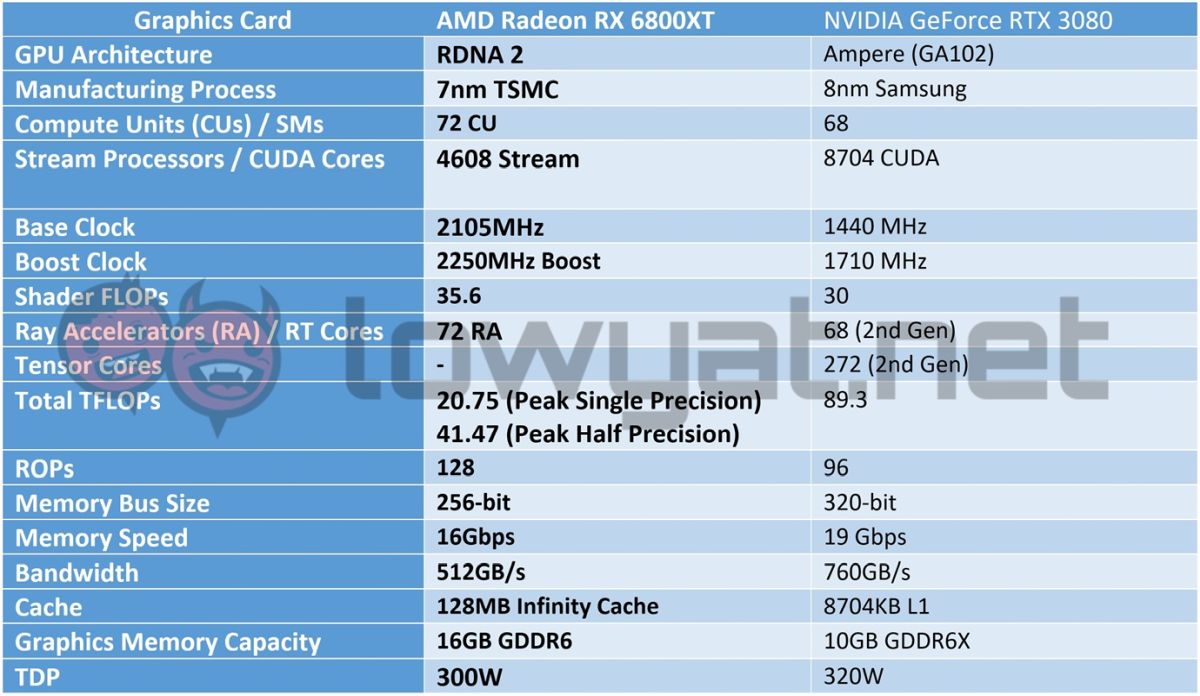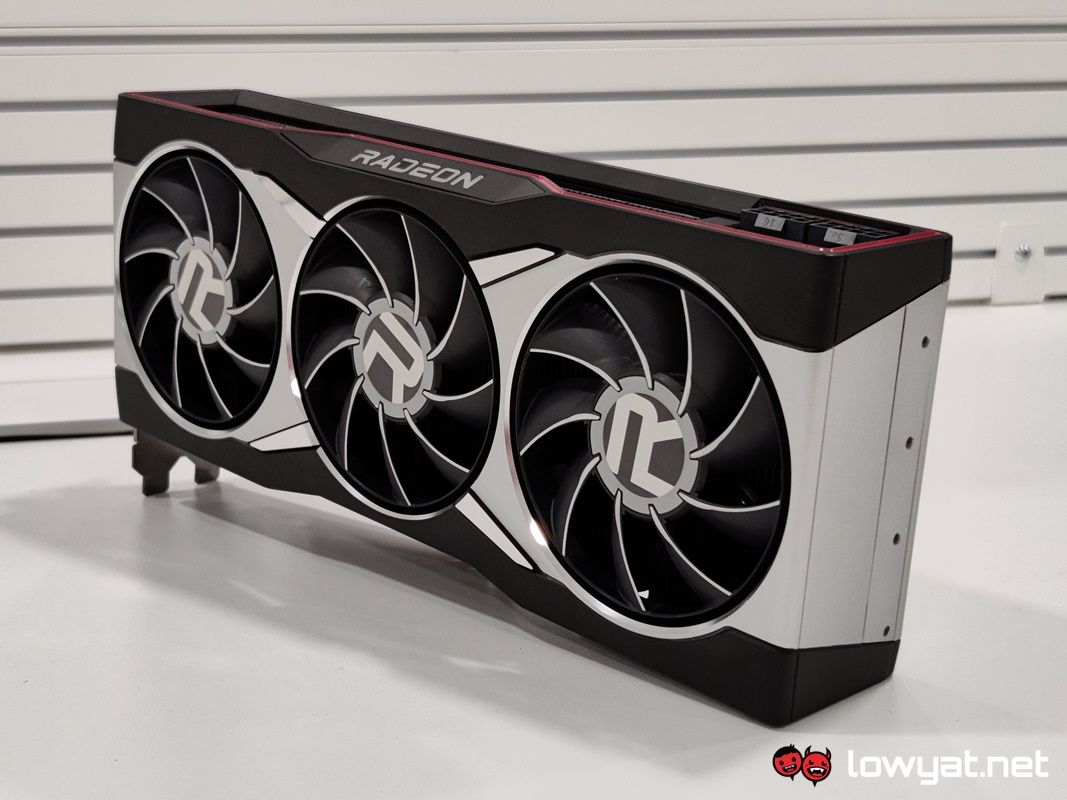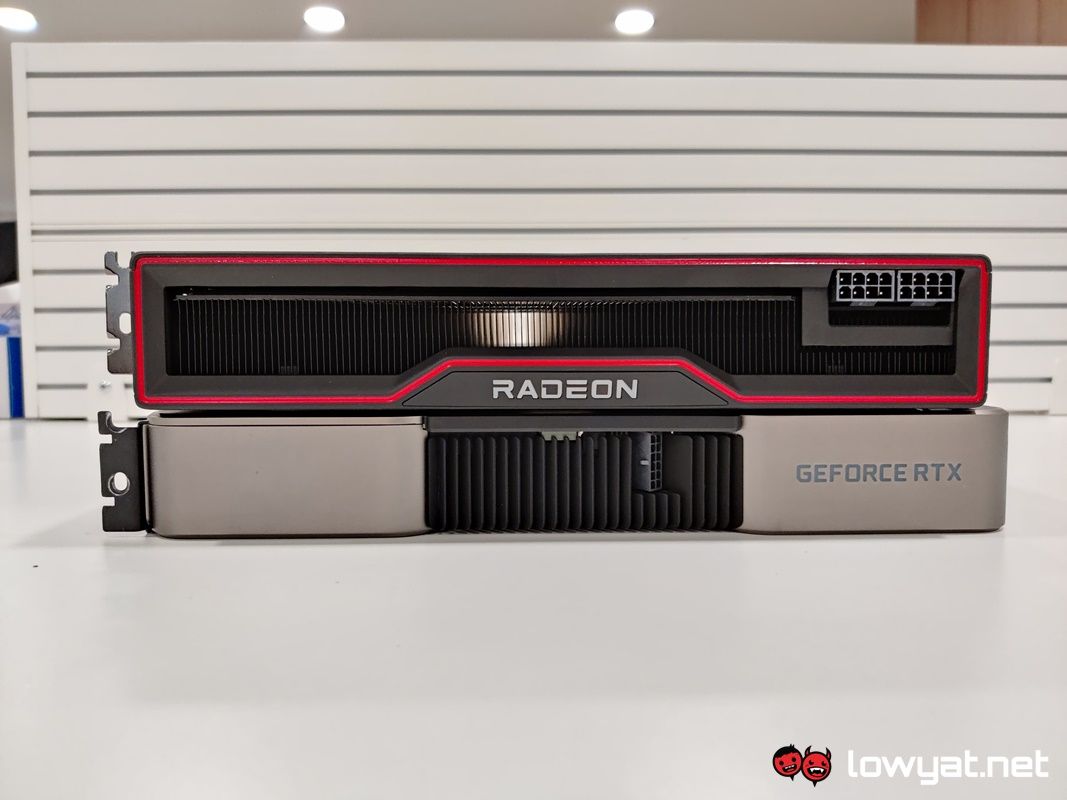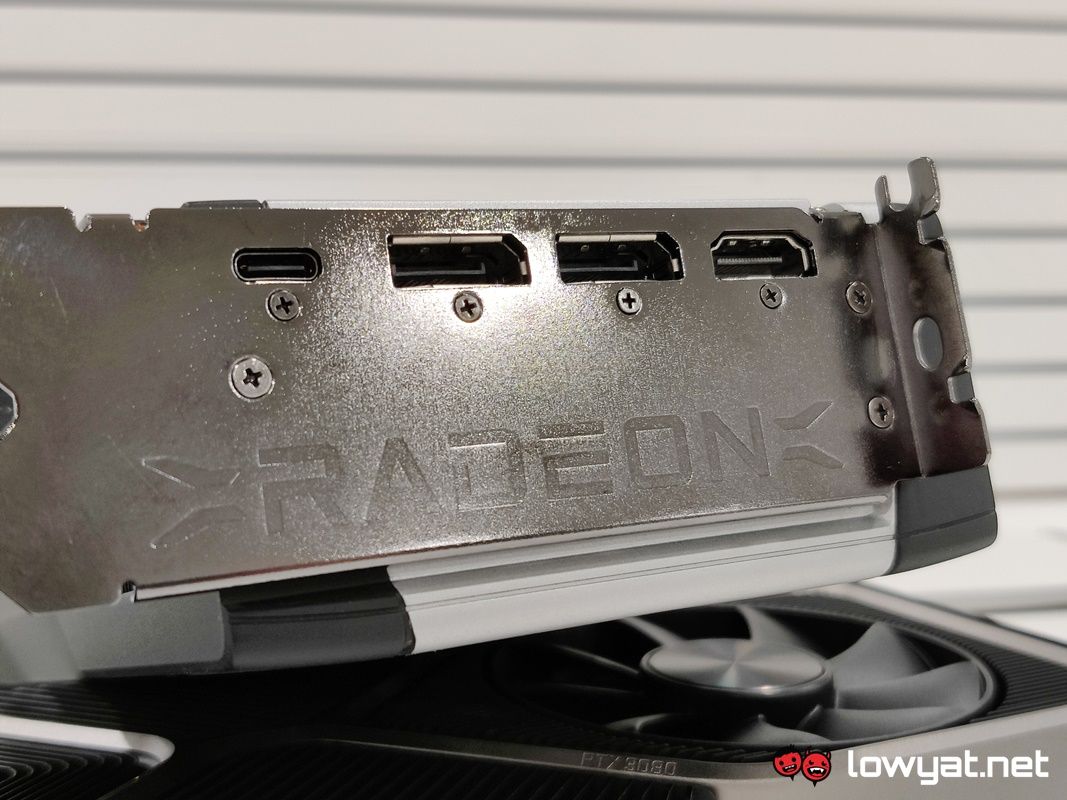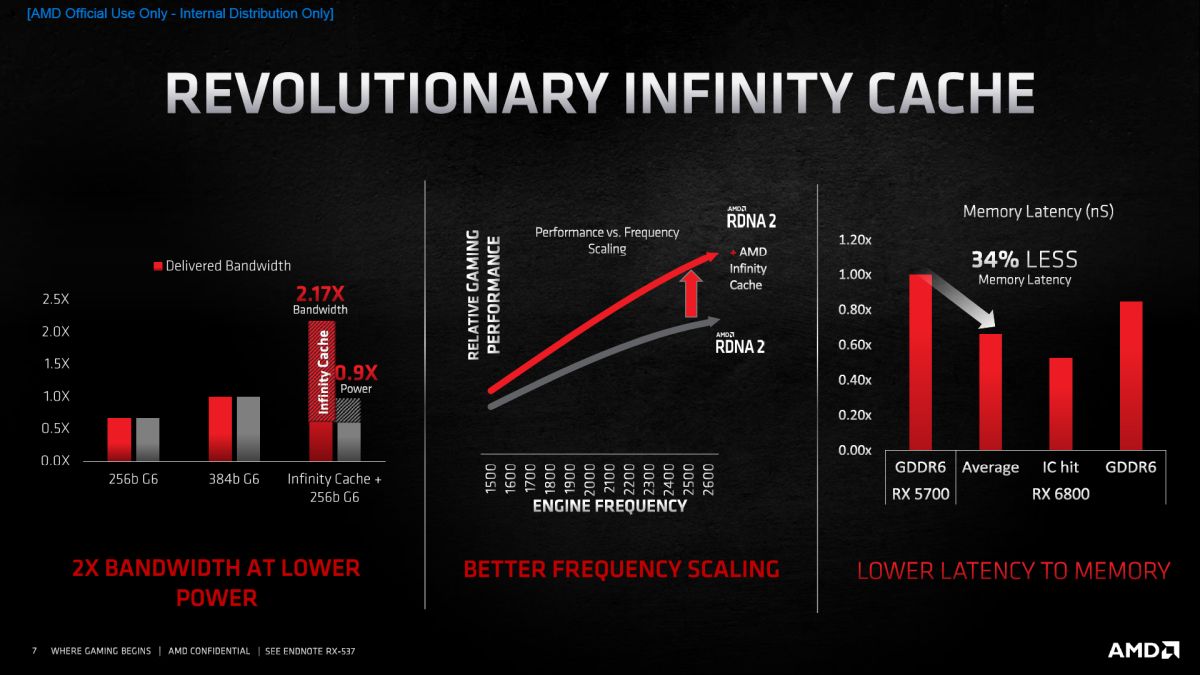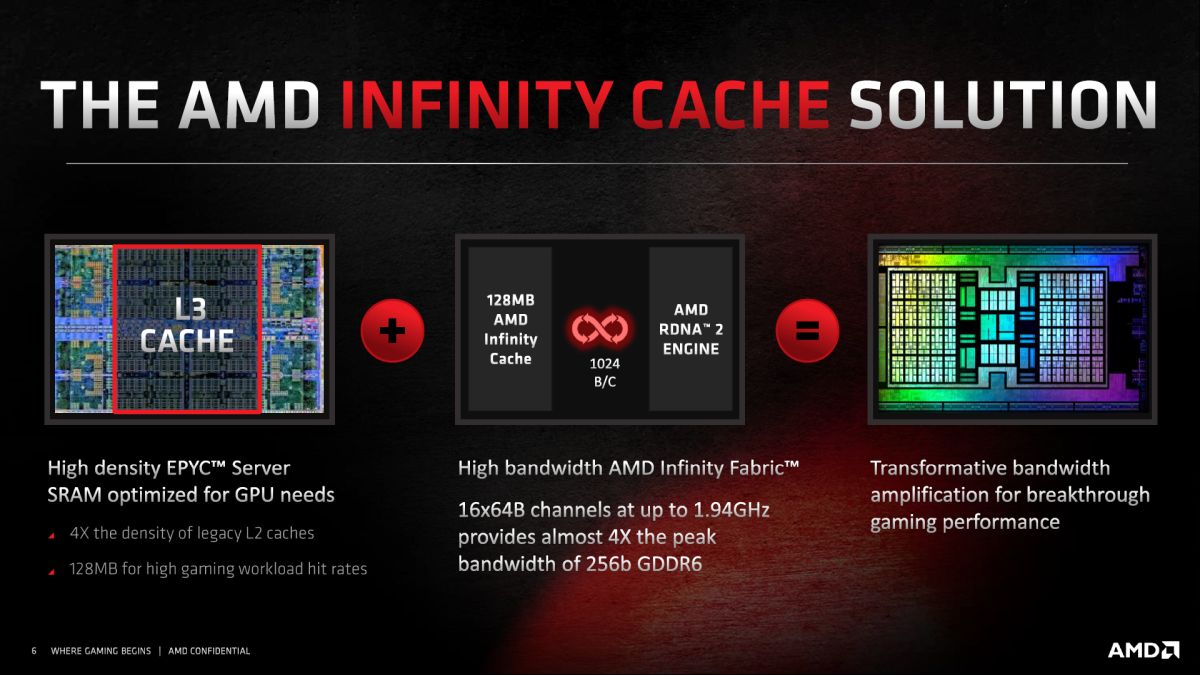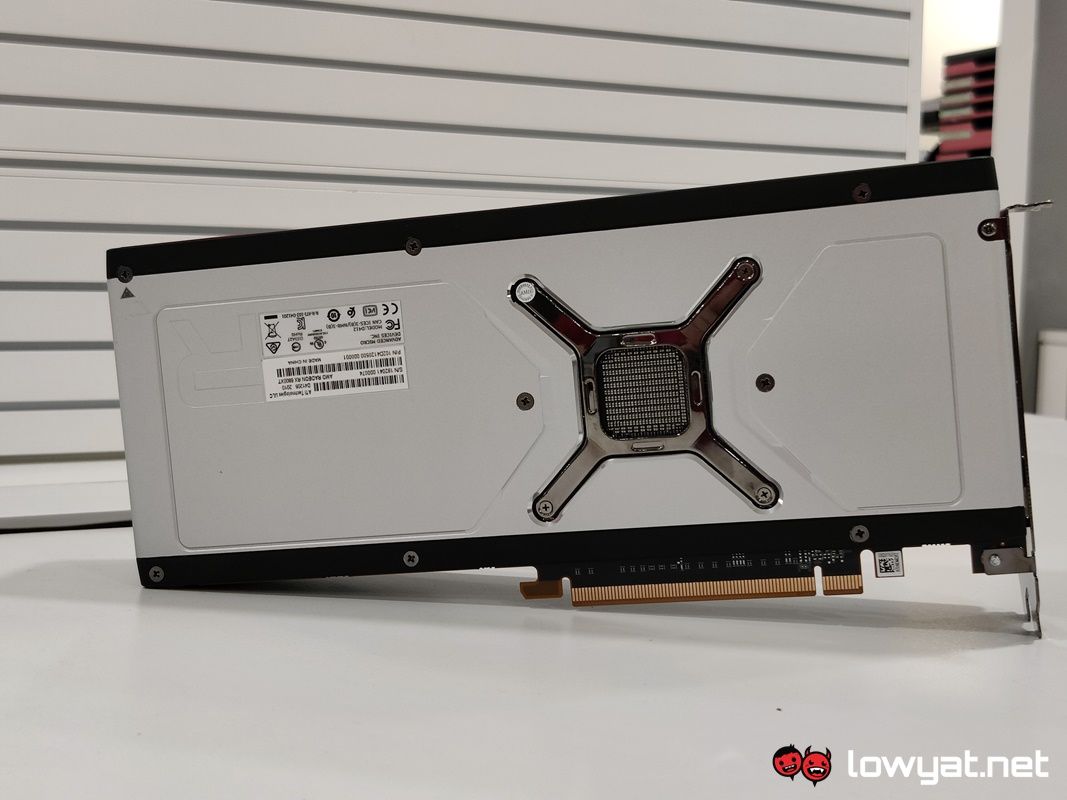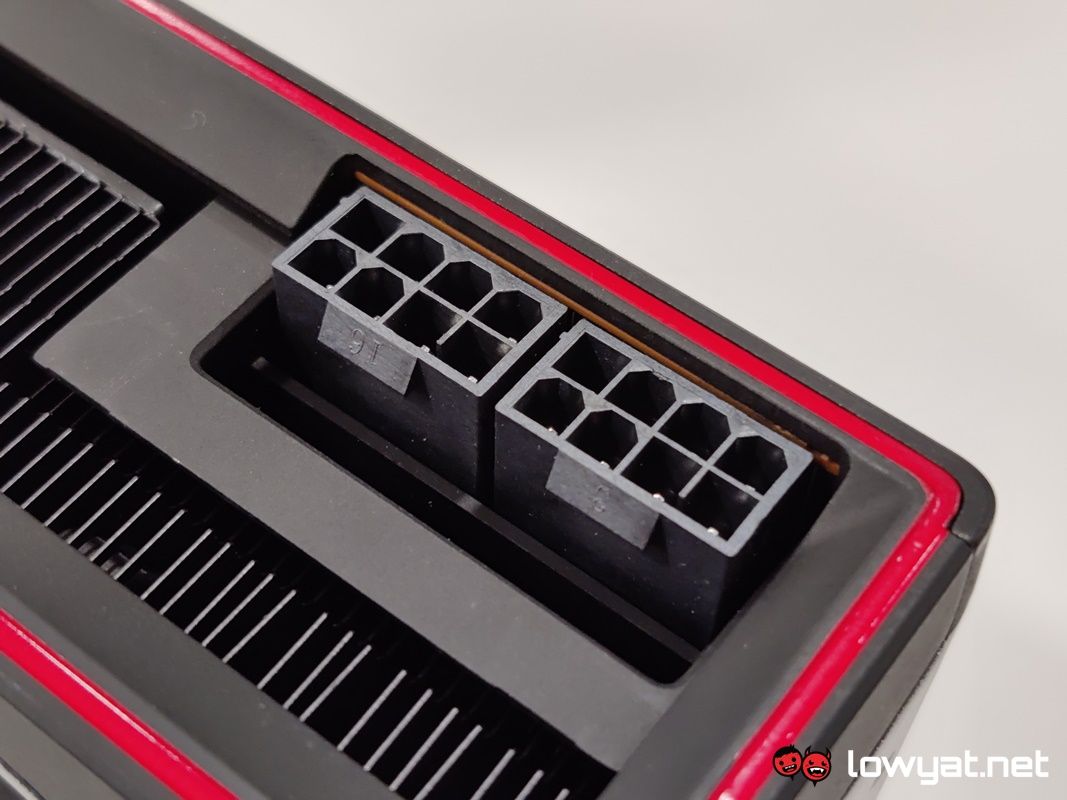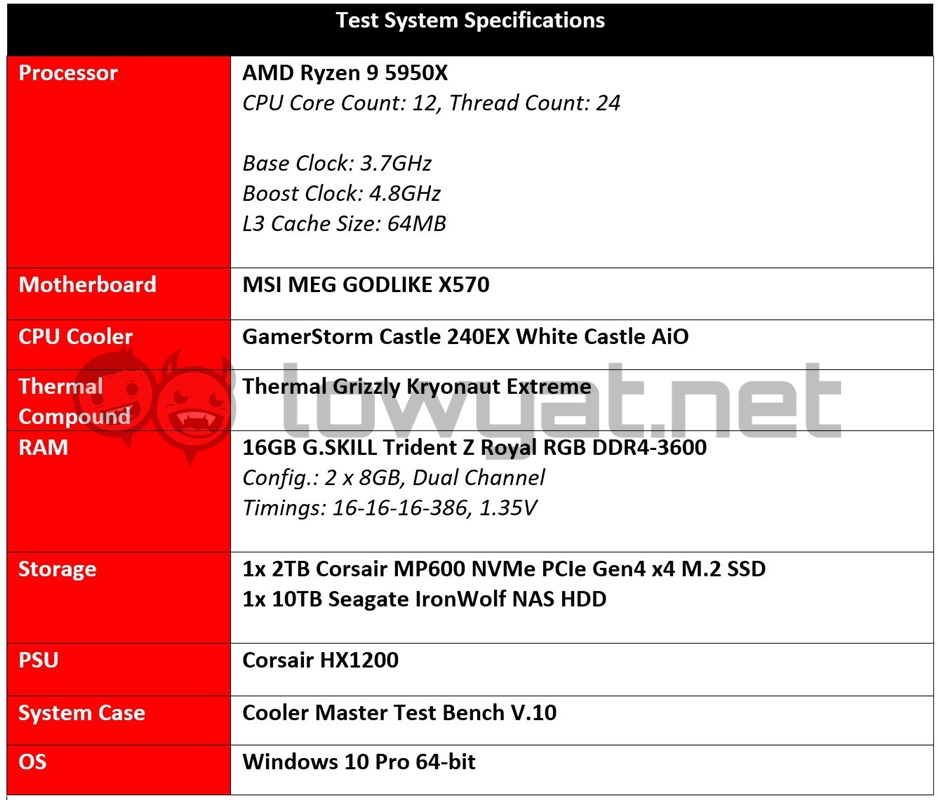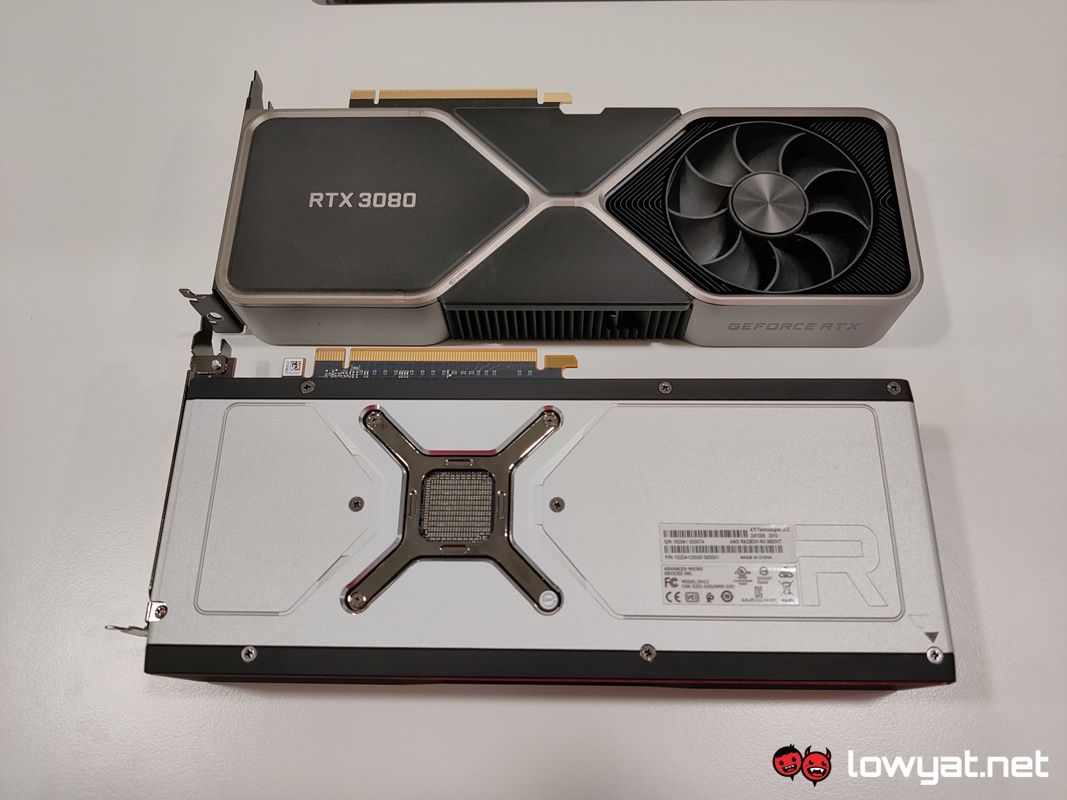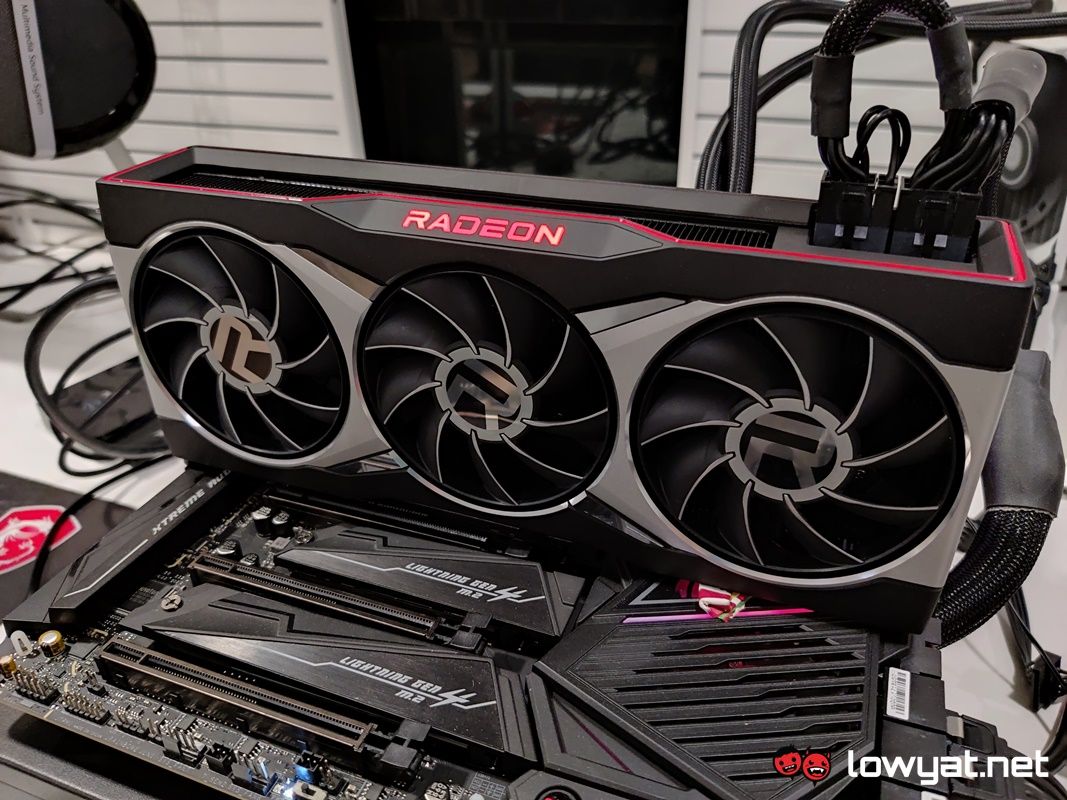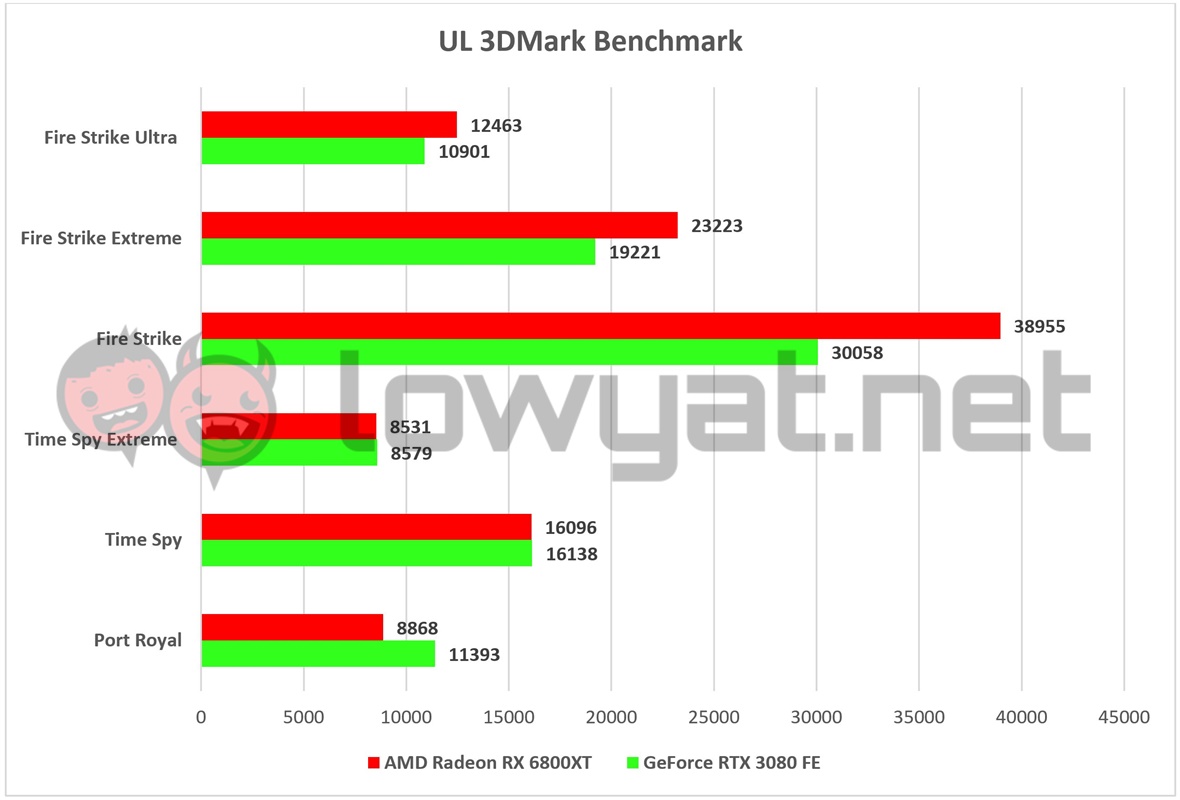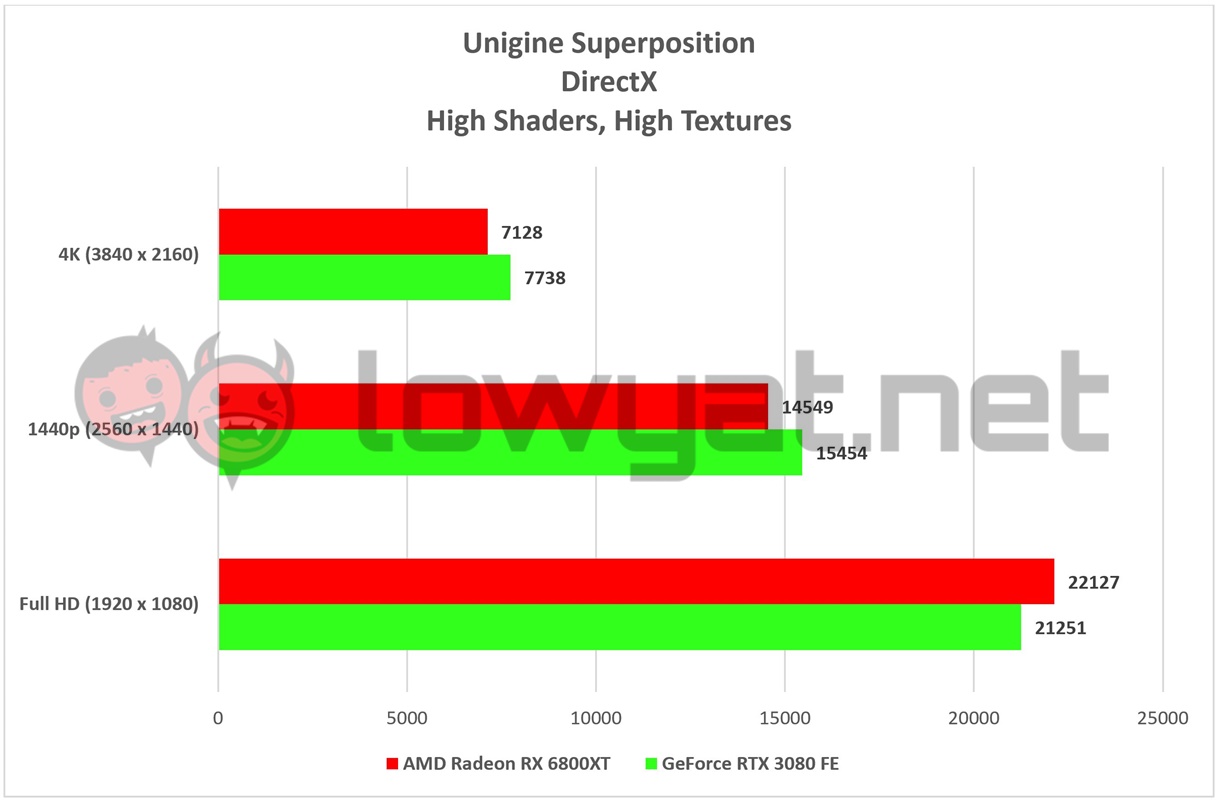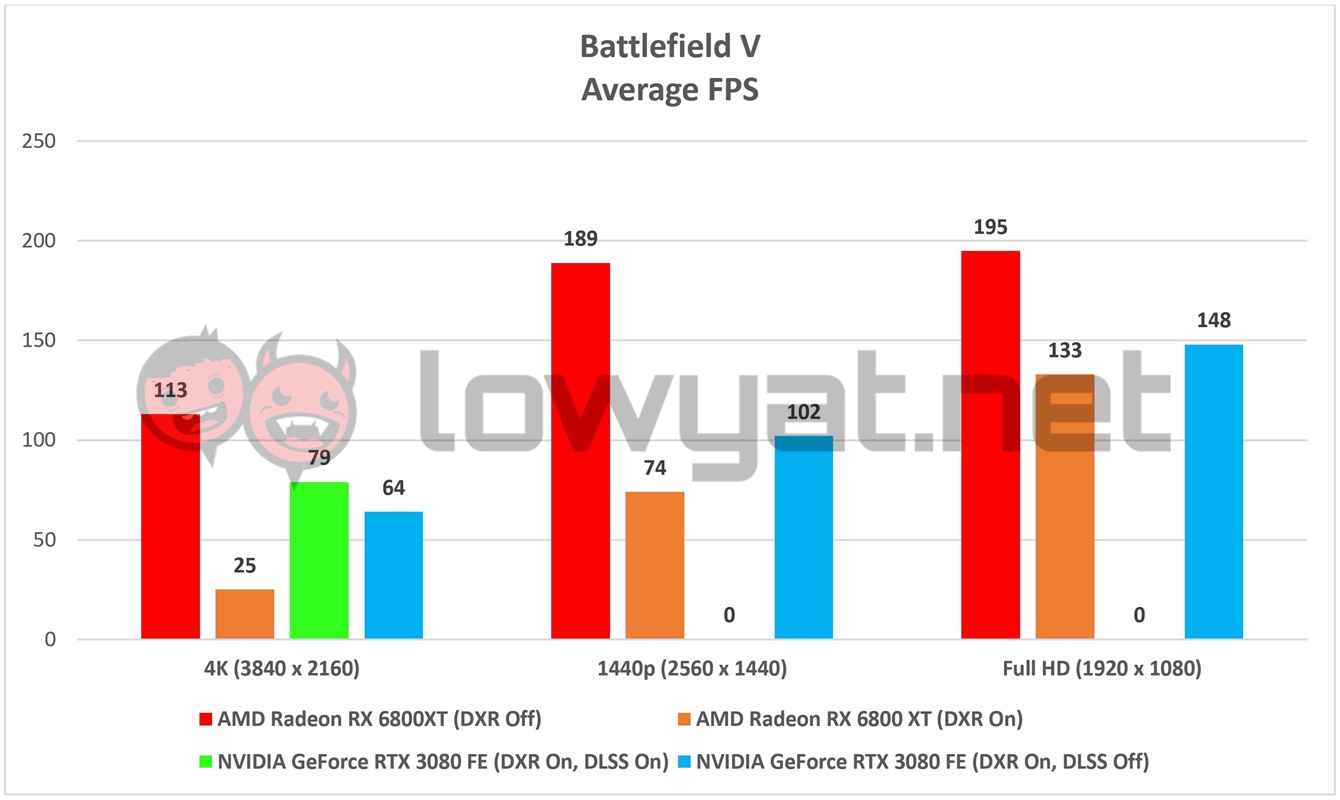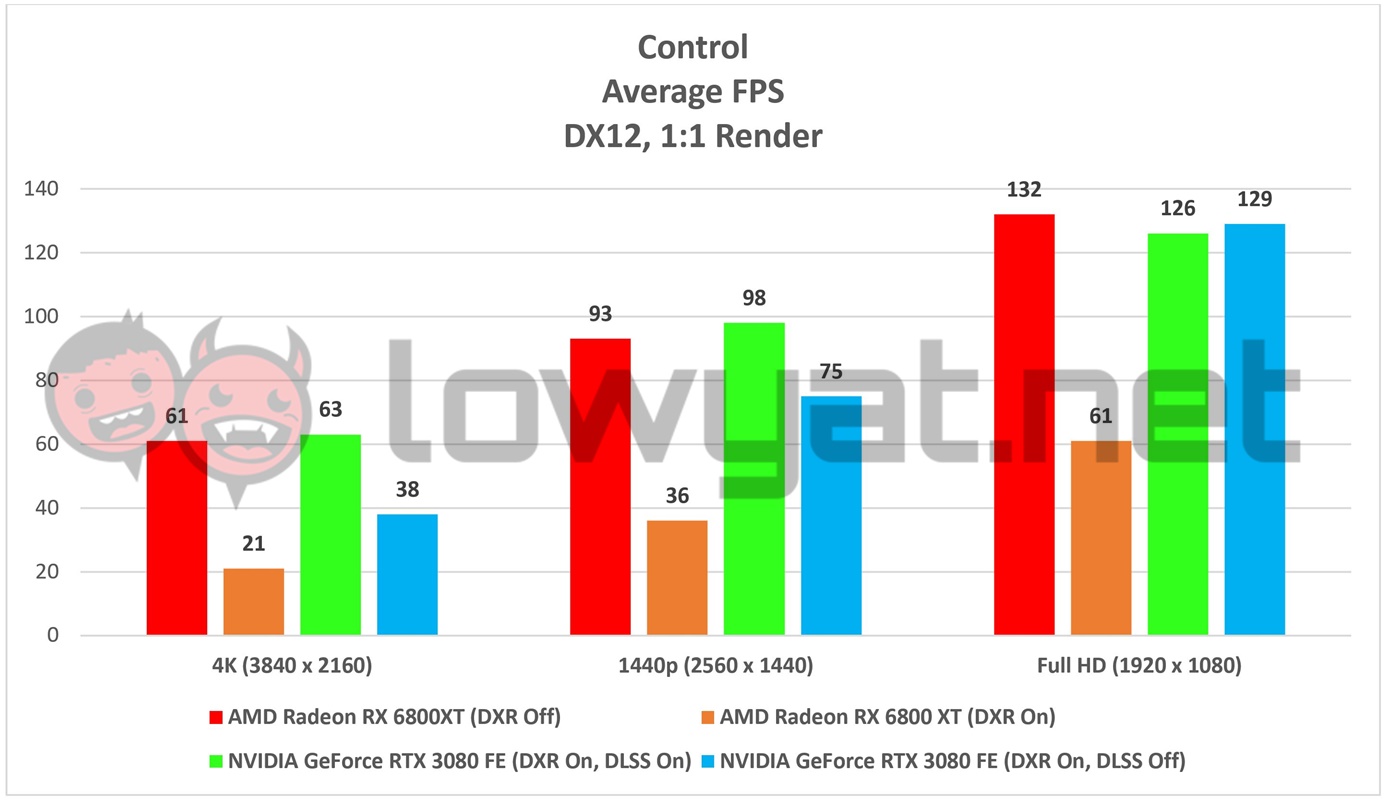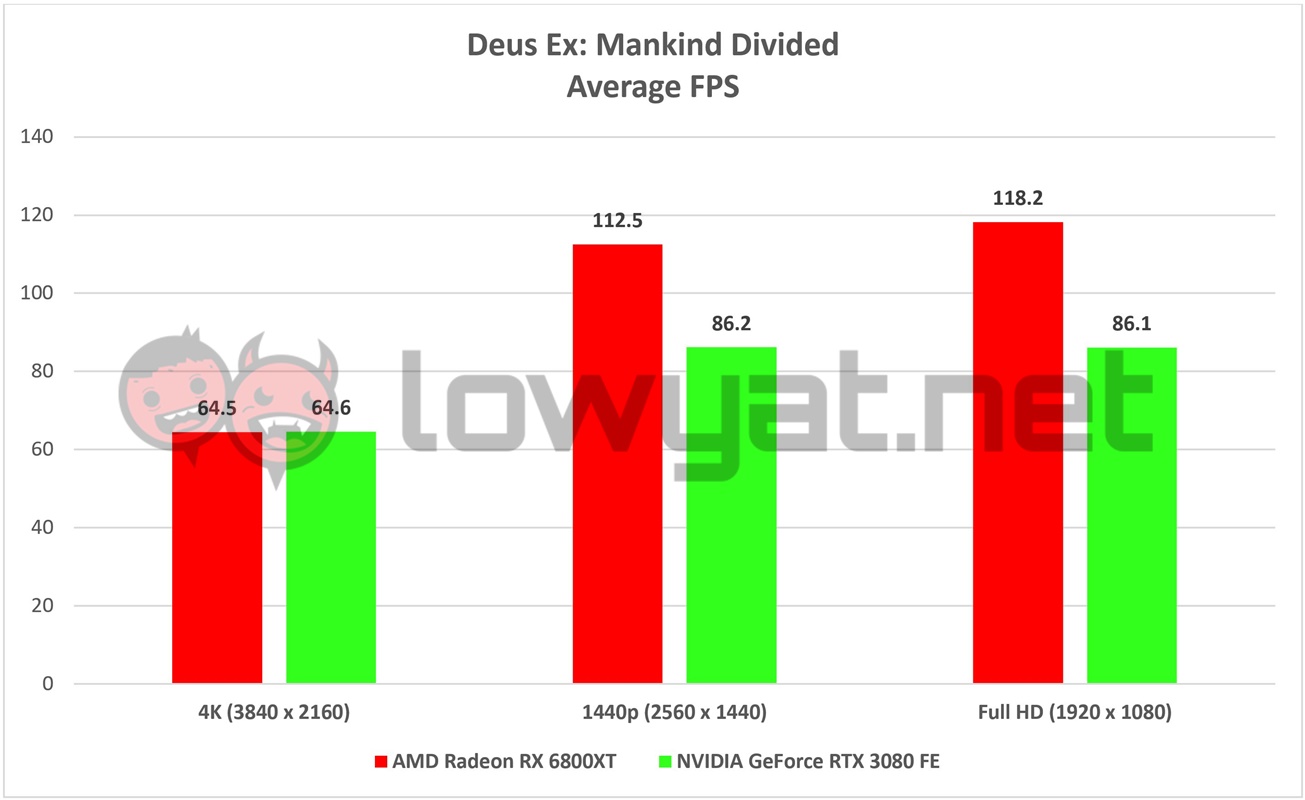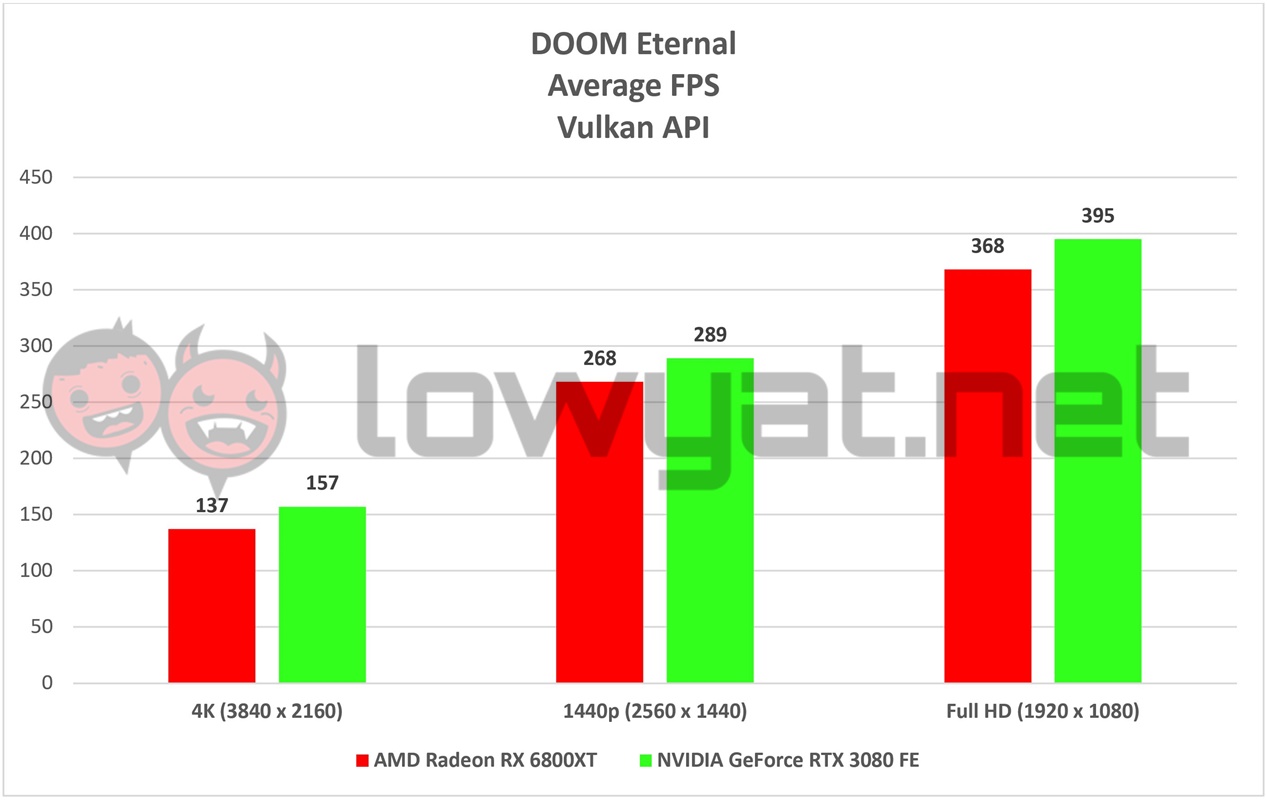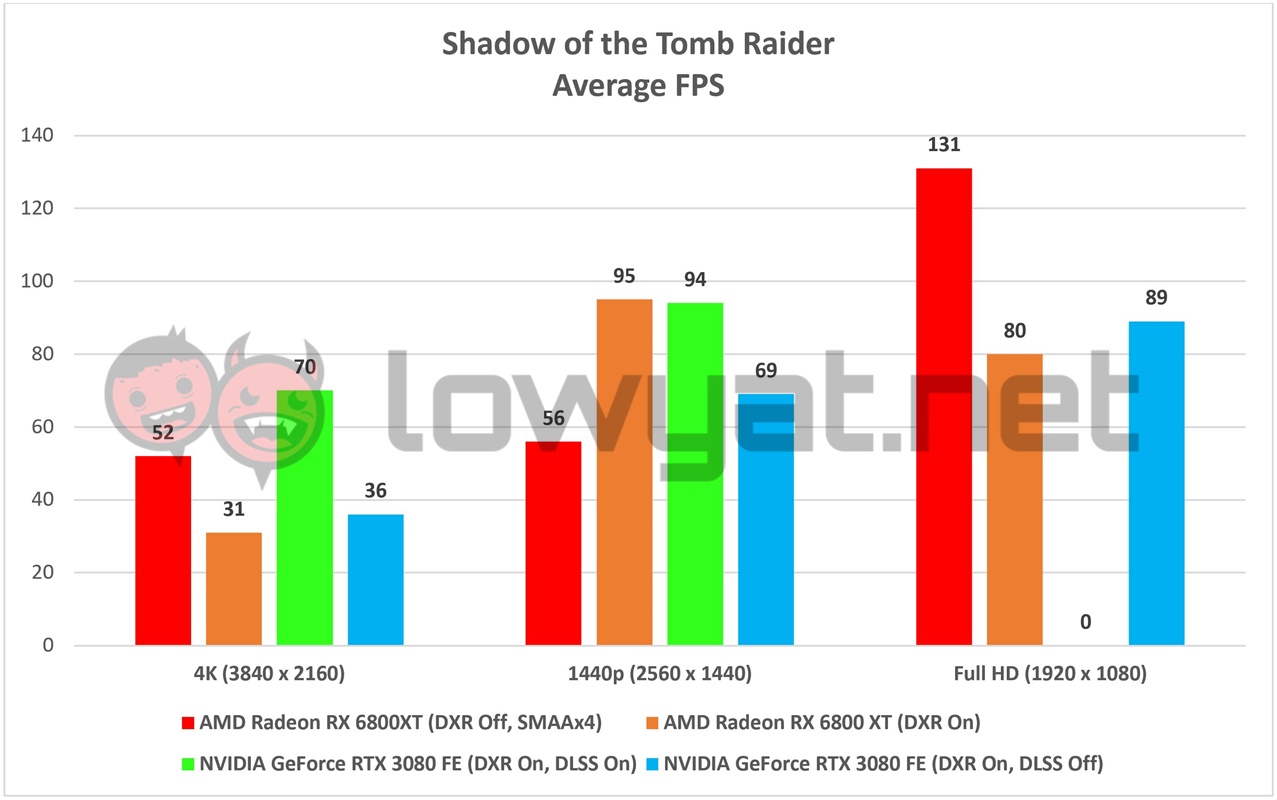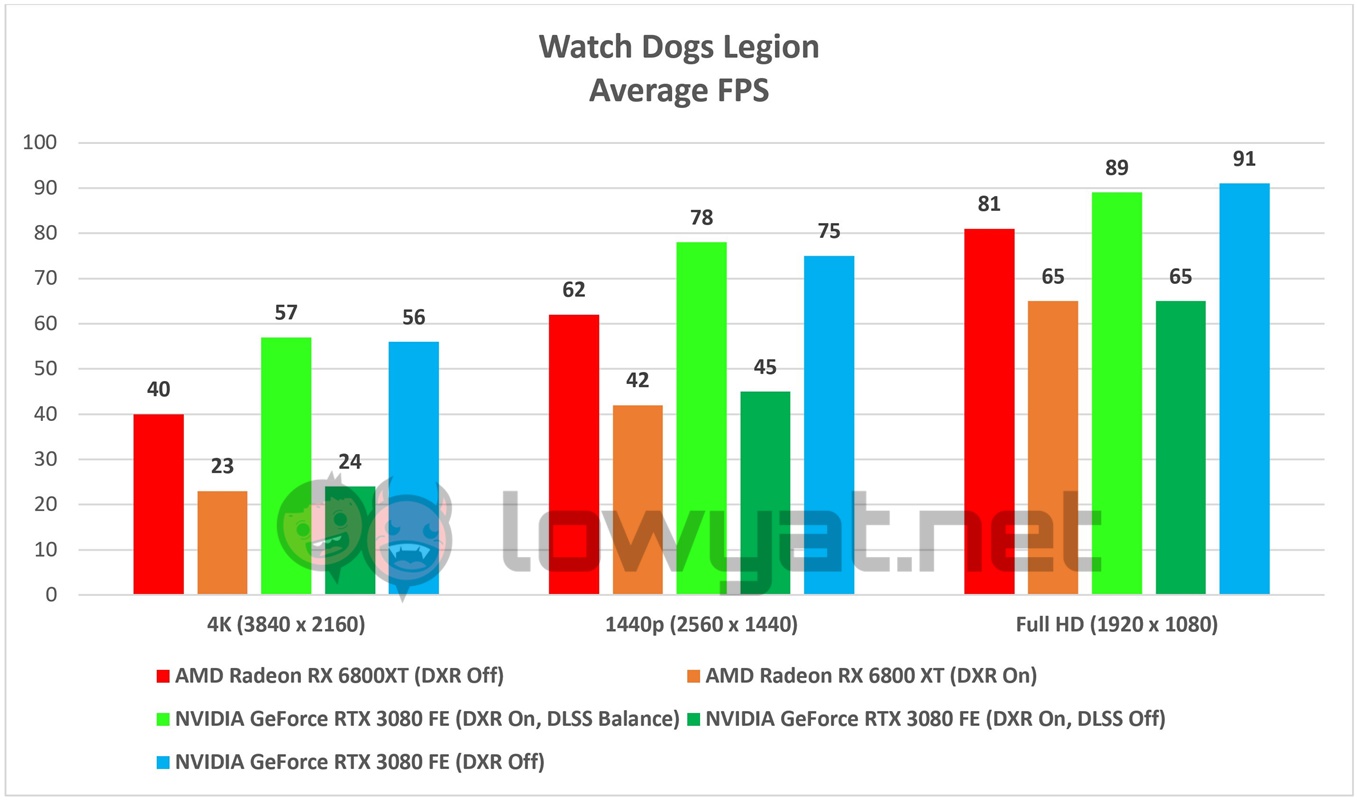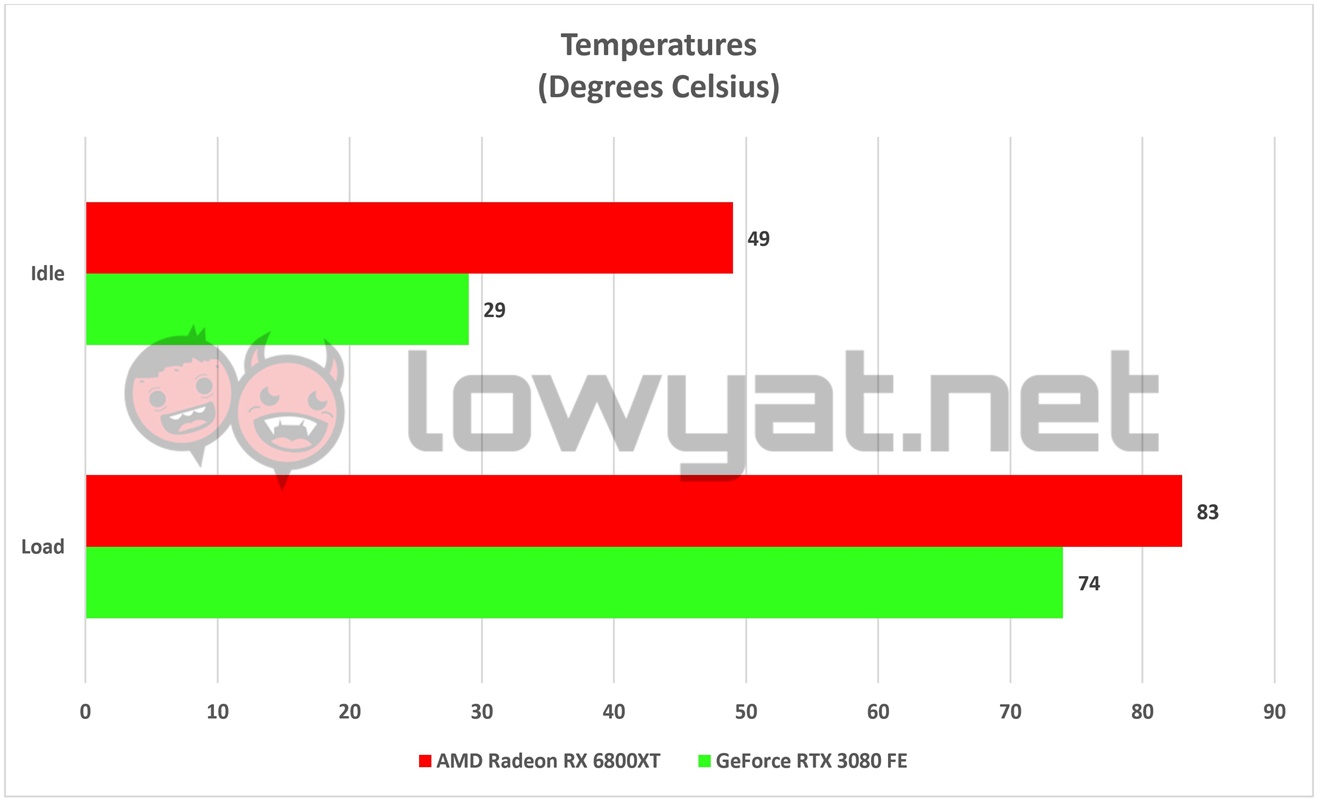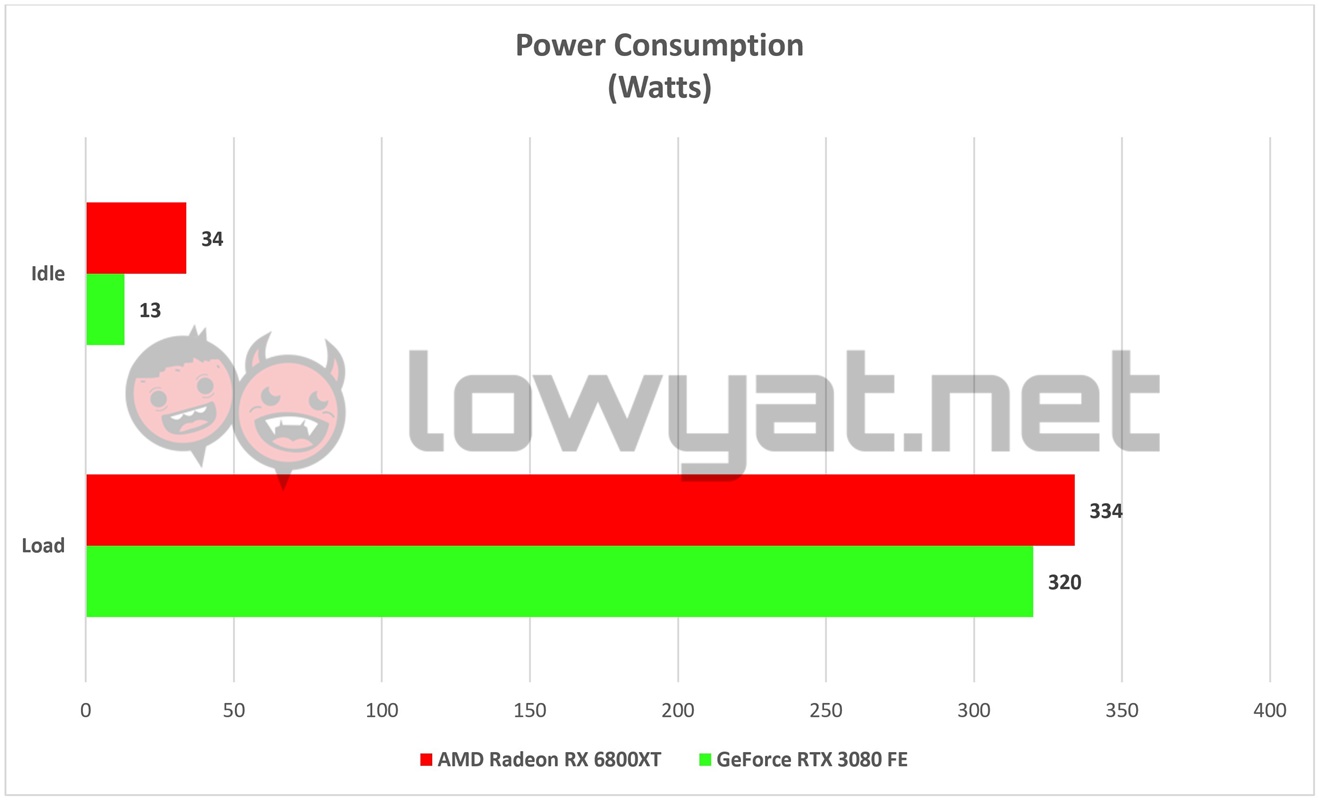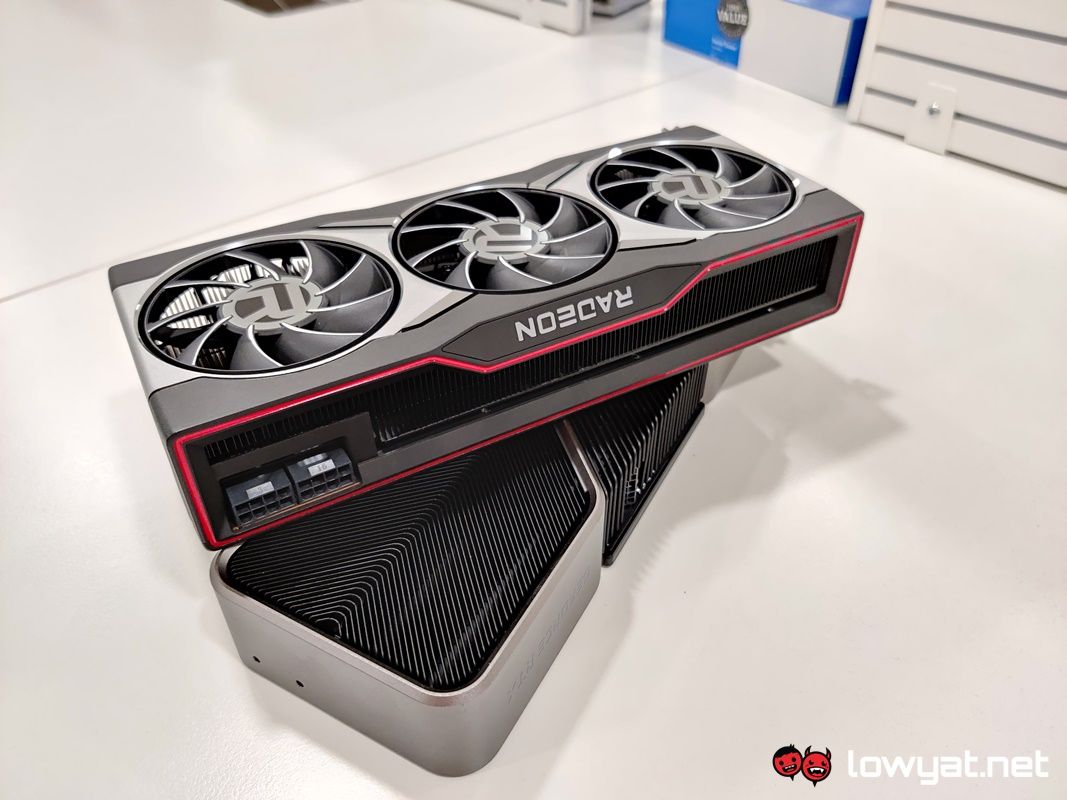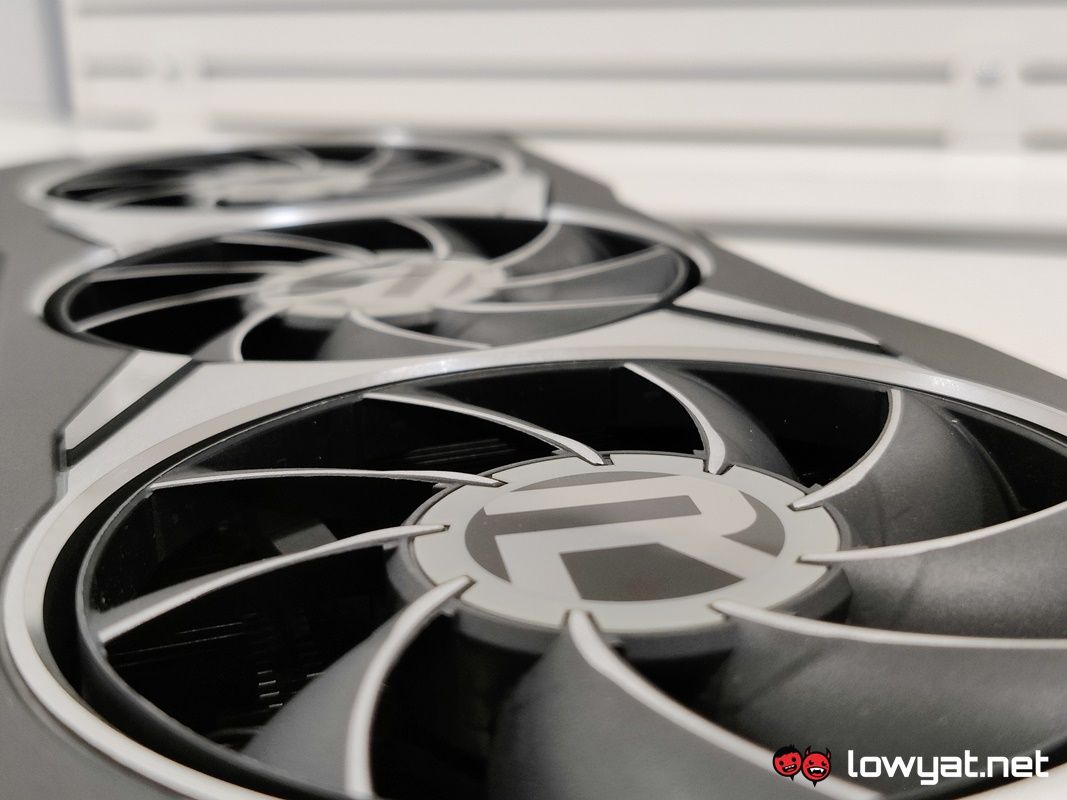As it stands, the new Radeon RX 6000 series comprises three cards: the RX 6800, RX 6800XT, and the RX 6900XT. While the latter card will only be made available in December, the first two should begin appearing on the shelves starting today. In this review, I’ll be looking into the performance of the 6800XT and see just how well it carries itself and holds up against NVIDIA’s GeForce RTX 3080, the card that AMD says is a direct rival.
Specifications
Design
At a glance, it’s plain to see that AMD isn’t stepping out of bounds with the 6800XT’s cooling solution and a reference card, I am no stranger to a GPU brand’s choice of aesthetics. For that matter, the cooler design of the 6800XT errs towards the simple and clean spectrum, yet still manages to command some attention towards its triple-fan and not-so-chunky design. That said, and to be clear, it’s nowhere near as unique as the shape and design of NVIDIA’s Founders Edition RTX 30 series cards, not by a mile. What I do find to be rather odd, though, is AMD’s decision not to cut out holes in the back of the card, that would typically serve as an exhaust port. Instead, the GPU maker thought it best to simply let the hot air get blown out through the spine and belly of the card, the latter exhaust seemingly weird, because it’s exhausting it directly into the motherboard.
Moving along, I also like how the 6800XT physically feels like a neatly and tightly packed physical package. Besides the obvious ventilation gaps at above and below the length of the card, the cooler shroud and backplate are so seamlessly screwed on, it simply looks airtight with zero gaps where the points meet. On a side note, the 6800XT’s actually not that much bigger than the RTX 3080 FE, at least as far as 2.5-slot cards go anyway. Oh, and in true AMD tradition, the backplate has a little cutout right where the GPU module is located.
As for the internal specs of the card, we’re looking at 16GB of GDDR6 graphics memory, with game and boost frequency of 2015MHz and 2250MHz. However, it should be noted that the card actually runs at higher frequencies than stated, and does so consistently throughout my review period with the card. But more on that later. Flanking the 6800XT’s Navi 21 GPU are 72 Compute Units (CUs), as well its brand new 128MB Infinity Cache that AMD is touting as the driving force behind its cards, enabling the new GPU to deliver double the performance-per-watt along with up to 34% lower memory latency.
Other details include a 256-bit memory bus, and 72 Ray Accelerators that are essentially modified CUs, designed to help the entire RX 6000 series deliver on its promise of real-time ray-tracing and the reason for its existence.
Testbed
One other thing that I should point out is that I am running the 6800XT out of the box. To that end, the benchmark scores and results reflected here do not include the card running at overclocked speeds or with AMD’s Smart Access Memory feature active. This is to ensure more uniform benchmark numbers. On that note, I’ll be comparing the card against NVIDIA’s GeForce RTX 3080 FE, seeing that AMD says the card is the 6800XT’s direct competitor. As for the CPU, I am testing both cards with AMD’s top of the line Ryzen 9 5950X, running at 4.625GHz; the most stable speed at which it can continuously sustain throughout both the review of the 6800XT, as well as its own.
As for benchmarks, you already know the synthetic benchmarks from UL’s 3DMark and Unigine Superpositions. I’m also using my usual list of game titles, along with a new title, Watch Dogs Legion, due to its support for DXR.
Benchmarks
This is clearly an exaggeration, but AMD is clearly not pulling any punches with the 6800XT. The card clearly makes it clear that it’s not messing around and can be seen dominating the majority of tests in 3DMark, leaving the RTX 3080 FE in a cloud of dust in all Fire Strike test. While going toe-to-toe with it in the Time Spy tests but trailing behind in the ray-tracing focused Port Royal test. In Superposition, the card doesn’t quite display that same level of power across the board, but the one thing I did notice is that unlike its direct counterpart, the framerates fluctuate far less and stay more consistent in all three respective resolutions.
As for the 6800XT’s gaming performance in the realm of 4K resolution, the story that unfolded in front of me cleared up the initial suspicions I had about the card when AMD first spoke about it. First, let’s get this point out of the way: just as it delivered on its promise with its Ryzen 5000 series CPUs, AMD delivers on the promise of a graphics card capable of 4K gaming, and comfortably to boot. The card is a beast, and as you can from some of the following game benchmarks, it either beats out or matches the RTX 3080 FE in terms of raw performance. Naturally, in titles that were originally tailored to run with AMD-based hardware – just like Eidos Montreal’s Deus Ex: Mankind Divided – there’s virtually no contest in which card will hold the higher framerates.
However, once I flipped the DXR switch, the difference in performance was like the sun and moon. With the DXR setting in all capable titles set at Ultra, coupled with the fact that AMD’s SuperResolution upscaling technology still isn’t available, frame stuttering and frame drops fast became an issue at 4K. In Shadow of the Tomb Raider, the 6800XT without DXR is actually running at framerates lower than what AMD initially shared. At this stage, I suspect that this is due to my choice of cranking the in-game anti-aliasing to the highest preset, SMAAx4. Which is what I suspect contributed to the drop in average frames.
In fact, the title in which those 4K framerate issues were most glaring is Watch Dogs Legion. Allow me to be clear: with DXR on, the game looks absolutely breathtaking in all its ray-traced aesthetic. Due to the nature of the game’s combat and pursuit mechanic, just being in a car chase or shootout dramatically drops the already low average framerate into single-digit territory. Having said that, dropping the resolution down a notch to 1440p does alleviate the DXR issue, for obvious reasons.
Temperature And Power Consumption
Normally, whenever one talks about temperature and AMD’s Radeon GPUs in the same sentence, the running joke is that its cards run fairly hot. While that may be true to some degree, it’s safe to say that AMD has definitely made some refinements to the heat dissipation technology of its cards. In the case of the RX 6800XT, the card still runs fairly hot, especially when it enters into a zero RPM state. At its lowest, the GPU temperature hovers around the 49°C mark and 59°C at its highest. Once it starts spinning, the highest registered temperature my card achieved was 83°C. Do note, that this temperature was never consistent and on average, the most it ever reached was 75°C while playing the majority of game titles.
As for power consumption, the 6800XT certainly consumes a little more than its 300W power envelope, but it certainly is no cause for alarm. As such, there is nothing out of the ordinary to be reported here.
Conclusion
So, at US$649 (~RM2652), the AMD Radeon RX 6800XT is truly and honestly sounding a lot like the card that many gamers have been hoping as an alternative to NVIDIA’s GeForce RTX 3080. It may stick to a traditional triple-fan cooler design that certainly warrants a revisit by engineers, but God above, the card is more than capable of holding its own in the realm of 4K gaming. That last point is also a double-edged sword for AMD, at least for the current moment. Once again, its SuperResolution upscaling technology is still in development and isn’t going to be available to general masses until sometime next year. Because of that, gamers will have to compromise by reducing the DXR presets in supported games, especially if you’re still planning on gaming at 4K resolution.
Be that as it way and while only a handful of games currently support DXR, it is inarguable that many game developers will be steadily adding support for ray-tracing into their game titles, in the foreseeable future. Again, this is a temporary issue, and once the technology becomes available, NVIDIA will certainly have something to worry about. On that note, if you’re thinking of purchasing this card, think of it as future-proofing for your overall experience. On another note, I am planning on looking at the card’s performance with AMD’s Smart Access Memory (SAM) mode and Rage Mode in a separate article, so keep a lookout for it.
